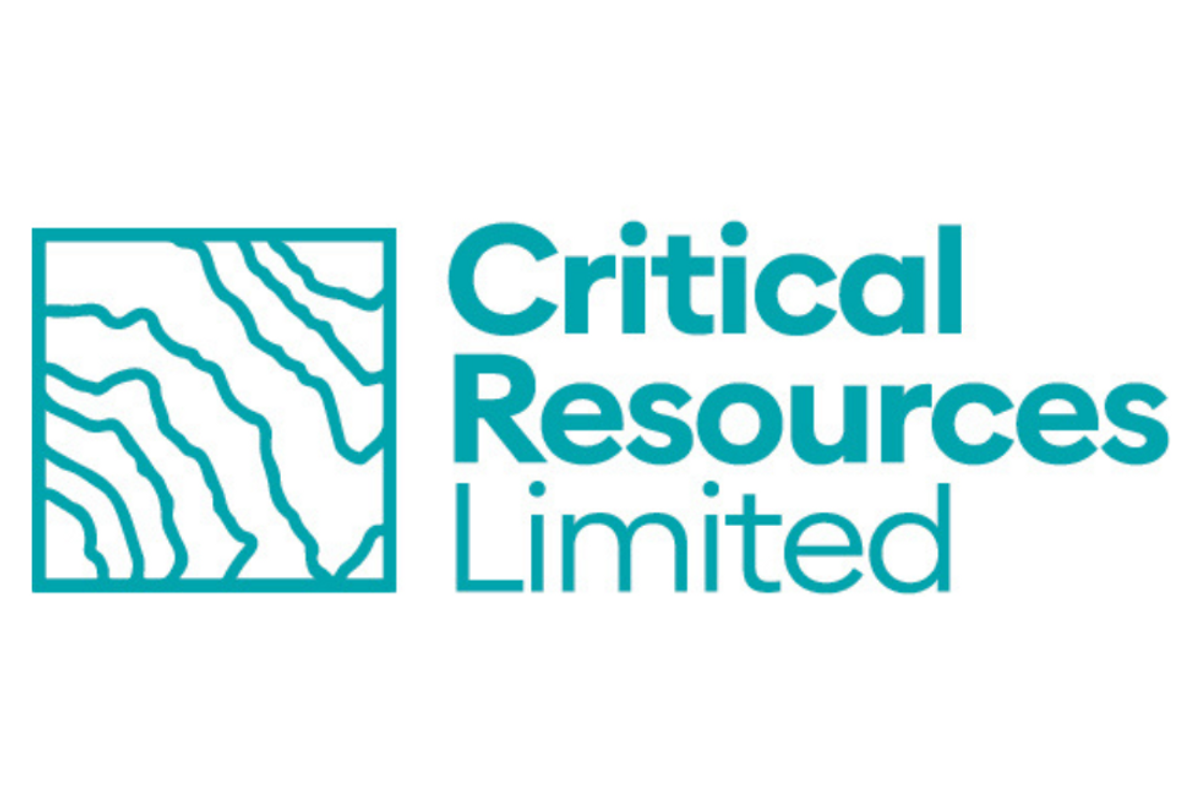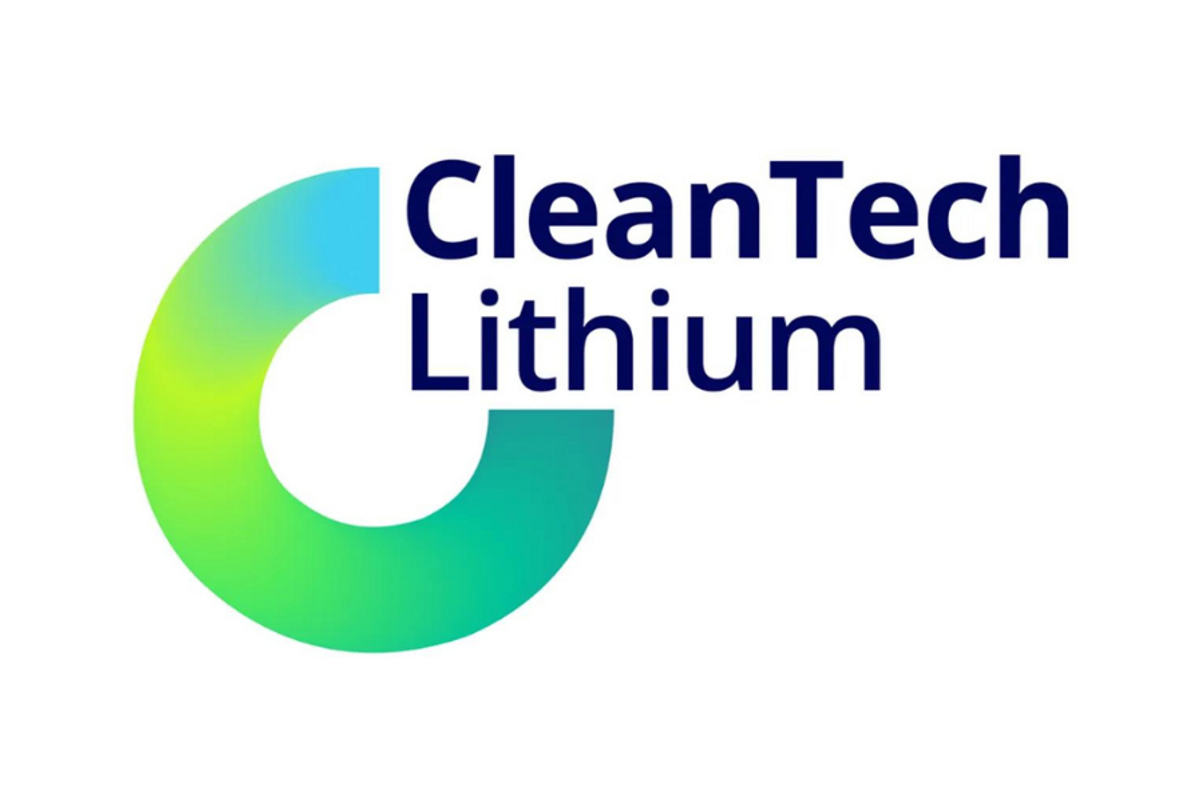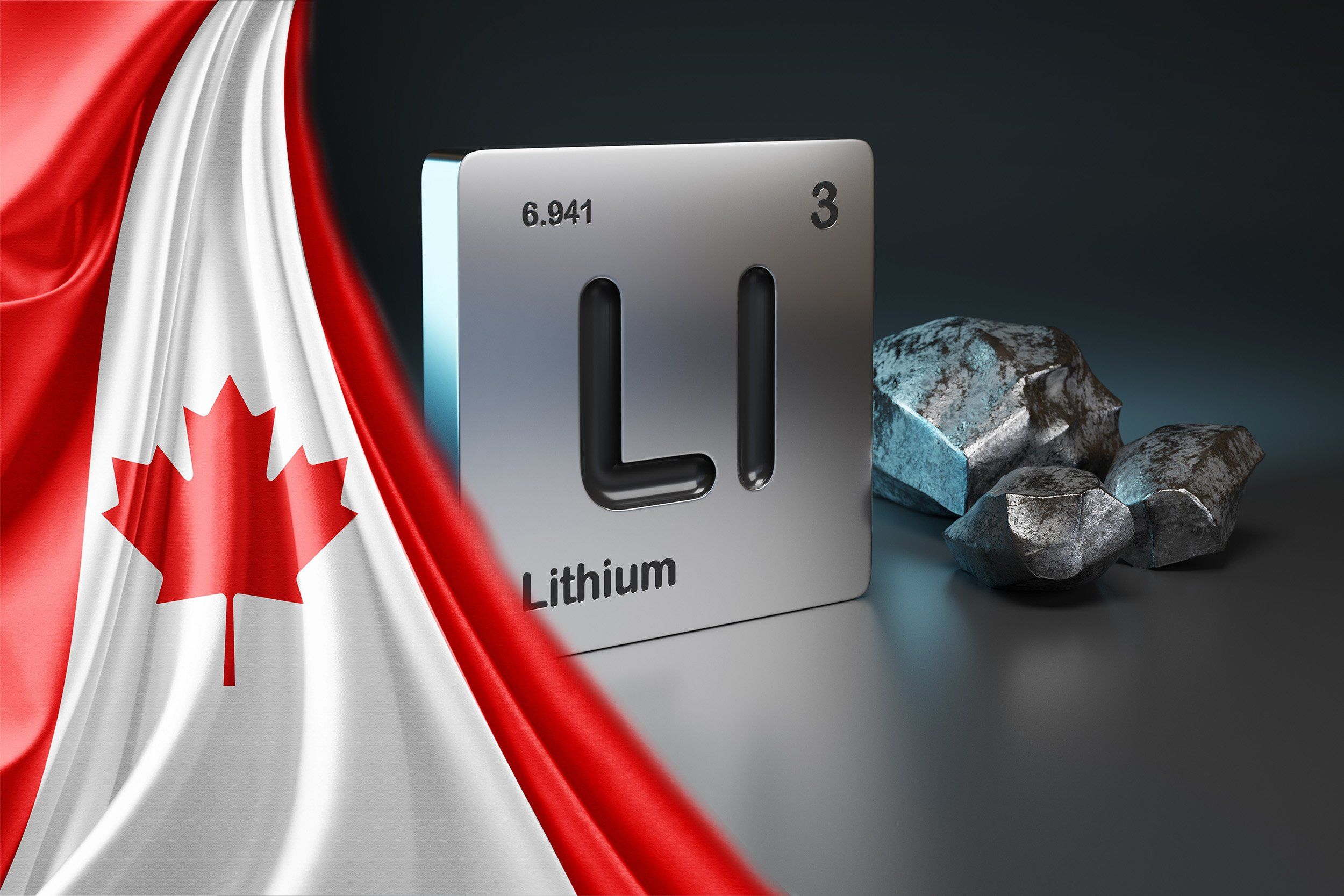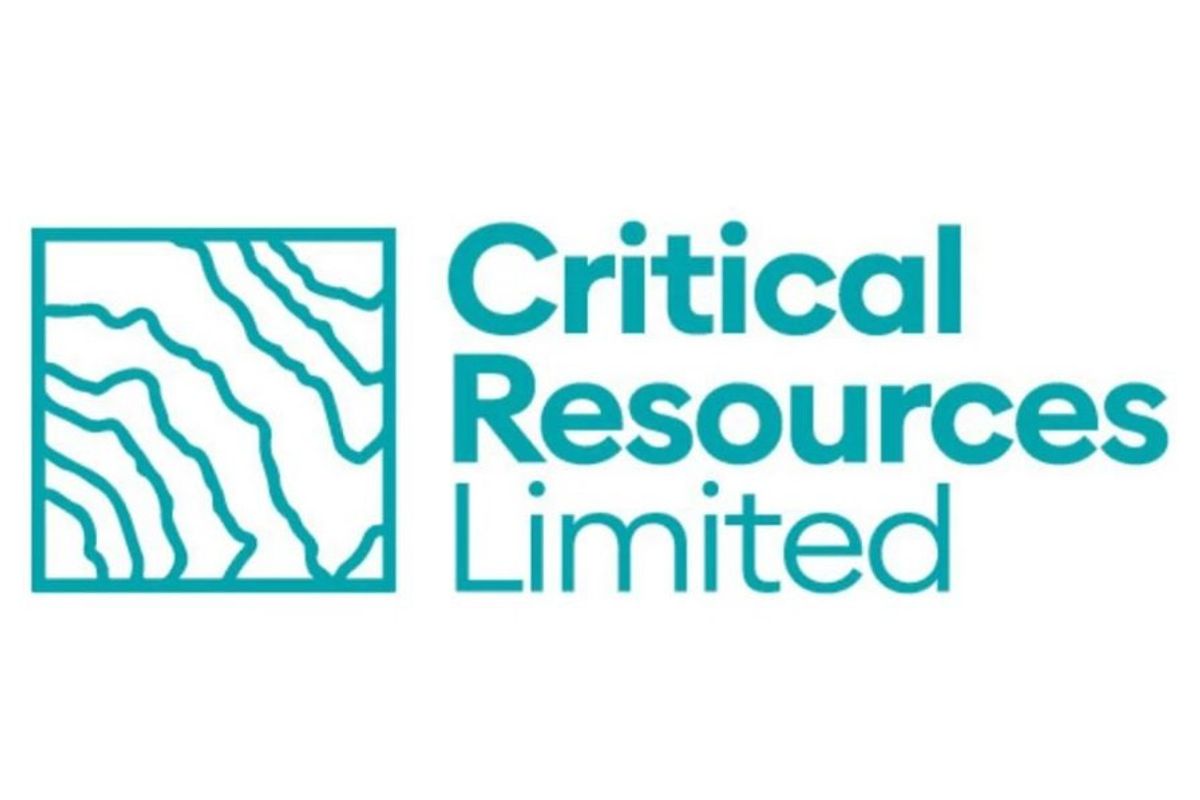
May 04, 2023
Lithium development company Critical Resources Limited ASX:CRR (“Critical Resources” or “the Company”) is pleased to announce a maiden JORC Code 2012 compliant Mineral Resource Estimate (MRE) for its100%-owned Mavis Lake Lithium Project in Ontario, Canada.
Highlights
- Maiden JORC Code 2012 compliant Inferred Mineral Resource Estimate (MRE) defined for the 100% owned Mavis Lake Lithium Project – Ontario, Canada
8.0 Mt at 1.07 % Li2O
- The Mineral Resource is based on drilling on approximately 2% of the Mavis Lake Project area and includes drilling results completed by the Company between April 2022 to March 2023
- Drilling from April 2023 has not been included in the MRE, and will be included in any future Mineral Resource upgrade
- Significant potential for further Mineral Resource upgrades have been identified with the Mavis Lake Main Zone mineralisation remaining open both along strike and down-dip
- Multiple, mapped spodumene-bearing outcrops across the Mavis Lake Project are yet to be drill tested
- Spring exploration works will also be conducted on the contiguous Gullwing and Tot Lakes prospects, located immediately north of the Mavis Lake Main Zone
- 2023 drilling campaign to continue in parallel with development studies
- Critical Resources is now one of only two ASX-listed companies with a JORC Code 2012 compliant Lithium Mineral Resource in Ontario, Canada
The maiden Inferred Mineral Resource of 8.0Mt grading 1.07% Li2O has been estimated following a continuous drilling program over the last 11 months. This reflects Critical Resources’ strategy to rapidly establish a significant inventory of high-quality, hard-rock lithium resources at Mavis Lake, setting the foundation for the Company to play a significant role in the North American critical minerals sector.
Critical Resources Managing Director, Alex Cheeseman, said:
“This is a significant milestone for our company and an accomplishment our staff, management and shareholders should be very proud of.”
“Critical Resources only began drilling at Mavis Lake 11 months ago and to have defined and declared a maiden Mineral Resource Estimate in such a short time is testament to the diligence and focus of our team and the high quality nature of the project.”
“Critical Resources is now just one of two ASX-listed companies with a JORC Code 2012 compliant Mineral Resource in Ontario putting us in an enviable position as we begin to engage with potential strategic and off-take partners, whilst continuing to advance the project.”
“A key message for investors is that this Resource is just the beginning of the Mavis Lake story.”
“The deposit itself remains open both along strike and down-dip, with significant potential to add further tonnes to the MRE with continued drilling.”
“In addition, the Gullwing/Tot Lakes prospects offer outstanding potential for new discoveries, supporting the already impressive MRE at Mavis Lake.”
“We expect that we will be able to continue to grow the Resource while working in parallel on the development aspects of the project in the years to come.”
Requirements for Material Mining Projects
The following subheadings are provided to satisfy the requirements applicable to reports of Mineral Resources for material mining projects under ASX Listing Rule 5.8.
Classification Criteria
The Mineral Resource has been classified in accordance with guidelines contained in the JORC Code. Key criteria that have been considered when classifying the Mineral Resource are detailed in JORC Table 1.
This classification is based on assessment and understanding of the deposit style, geological and grade continuity, drill-hole spacing, input data quality (including drill collar surveys and bulk density).
The Mineral Resource was classified as Inferred, accounting for the level of geological understanding of the deposit, quality of samples, density data, drill-hole spacing and sampling, analytical and metallurgical processes. Material classified as Inferred was considered sufficiently informed by geological and sampling data to imply geological, grade and quality continuity between data points.
The classification reflects the level of data available for the estimate, including input drill-hole data spacing, and high level of confidence in geological continuity for this particular style of deposit.
Geology and Geological Interpretation
The Mavis Lake Lithium Project consists of a large Main Zone and multiple smaller zones proximal to the Main Zone. The Main Zone pegmatite area has a dominant 1km E-W strike that has a shallow dip to the north that has been tested to a down-dip depth of ~300m (~250m vertical depth). The Main Zone is a complex structure that is associated with multiple stacks of pegmatites and bifurcation. Spodumene is the main lithium-bearing mineral and occurs in varying concentrations within pegmatites of the Main Zone.
Multiple smaller zones have been identified through present and historical drilling. These are known as: Pegmatite 18, Main Zone East, and South Zone (Figure 1). All these zones were included in the MRE.
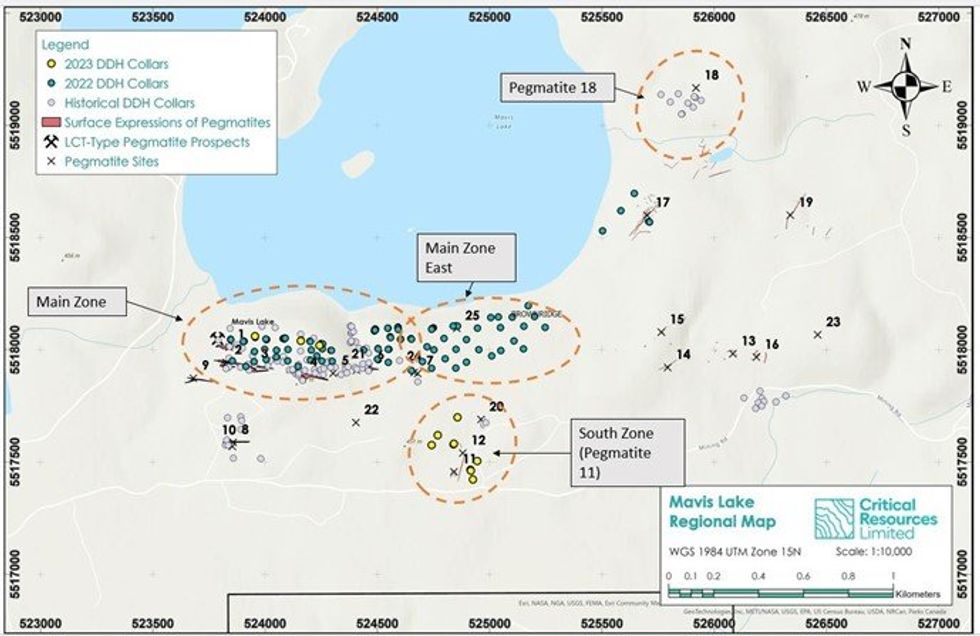
Sampling and Sub-Sampling Techniques
All samples in the 2023 MRE are from diamond drill cores. The sample lengths within mineralised rocks were from 0.3 m to 2.9 m or to match logged lithologies (Figure 2).
Click here for the full ASX Release
This article includes content from Critical Resources Limited, licensed for the purpose of publishing on Investing News Australia. This article does not constitute financial product advice. It is your responsibility to perform proper due diligence before acting upon any information provided here. Please refer to our full disclaimer here.
CRR:AU
The Conversation (0)
21 June 2022
Critical Resources
High-grade Lithium Portfolio, in a Tier 1 Location, Aligned with the World’s Green Energy Transition
High-grade Lithium Portfolio, in a Tier 1 Location, Aligned with the World’s Green Energy Transition Keep Reading...
2h
China Grants Conditional Approval to Codelco-SQM Lithium Joint Venture
Chile’s state-owned copper giant Corporación Nacional Del Cobre de Chile (Codelco) and local lithium producer Sociedad Quimica y Minera (SQM) (NYSE:SQM) cleared the final major hurdle for a long-planned partnership after China’s antitrust regulator granted conditional approval to the venture.The... Keep Reading...
10 November
Laguna Verde Resource Increase Based on Recent Licence Acquisition
CleanTech Lithium PLC ("CleanTech Lithium" or "CleanTech" or the "Company") (AIM: CTL, Frankfurt:T2N), an exploration and development company advancing sustainable lithium projects in Chile, announces an updated resource estimate for its Laguna Verde project following the recent acquisition of... Keep Reading...
05 November
Top 5 Canadian Lithium Stocks of 2025
The global lithium market saw sharp swings in Q3 2025 as shifting supply dynamics, policy uncertainty, and geopolitical developments reshaped investor sentiment. After hitting a four-year low in June, benchmark lithium carbonate prices briefly surged to an 11 month high in August on speculation... Keep Reading...
Latest News
Latest Press Releases
Related News
TOP STOCKS
American Battery4.030.24
Aion Therapeutic0.10-0.01
Cybin Corp2.140.00
